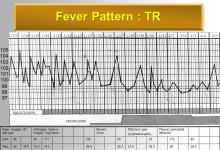Muscle Weakness Predicts Disability in Scleroderma Save

Muscle weakness was independently associated with disability in patients with scleroderma, and as muscle weakness worsened, disability also increased, according to findings from a retrospective, nested, case control study.
Patients with muscle weakness had an average Health Assessment Questionnaire-Disability Index (HAQ-DI) of 1.4, which indicates moderate to severe disability, according to Julie J. Paik, MD, MHS, and colleagues from Johns Hopkins University in Baltimore.
Muscle weakness was assessed with the Medsger muscle severity score of 0 to 4, with 0 representing no weakness and 4 representing the need for ambulation aids. For every unit increase in the muscle severity score, there was a clinically significant increase (minimally important difference of 0.14 or more) in the HAQ-DI, the researchers reported online in Arthritis Care & Research.
Compared with patients whose Medsger scores were 0, the mean HAQ-DI increased by 0.49 in patients with a muscle severity score of 1 (P≤0.0001), by 0.73 in those with a score of 2 (P≤0.0001), by 0.99 in those with a score of 3 (P=0.02), and by 1.1 in those with a score of 4 (P=0.02).
"Our study highlights the importance of muscle weakness contributing to clinically significant disability as measured by a patient-reported outcome -- HAQ-DI. This finding was consistent even after controlling for age, sex, race, disease duration, subtype, synovitis, and forced vital capacity (FVC) less than 70%," they wrote.
"We feel that that this is clinically relevant because muscle weakness can potentially be a modifiable risk factor in the outcome of physical function with treatment," they added.
Previous studies have identified muscular involvement in scleroderma as a poor prognostic feature, even being associated with sudden cardiac death, but the influence of weakness on disability has not yet been examined.
Paik and colleagues identified 1,718 patients enrolled in the Johns Hopkins Scleroderma Center database from 1990 to 2010 who had Medsger scores and HAQ-DI information available.
The mean age of the study population at onset of scleroderma was 52.4. A total of 82.7% were female, and 78.4% were white.
Of the 1,718 participants, 22.8% were considered weak, in that they had Medsger scores of 1 or higher.
Compared with the group that was not weak, the weak group more often had the diffuse subtype of disease (55.6% versus 35.1%,P0.0001) with higher maximum modified Rodnan skin scores (16.3 versus 10.3, P0.00001). They also:
- Had shorter disease duration from first non-Raynaud's symptom to first visit (5.2 versus 6.2 years, P=0.02)
- Were more often in renal crisis (7.1% versus 1.4%,P0.0001)
- Had a higher creatine kinase level (441 versus 151 IU/L,P=0.00001)
- Had a higher prevalence of synovitis (17.7% versus 11.4%,P=0.001)
- Were more likely to have FVC below 70% (46.2% versus 30.6%, P0.0001)
There was a general trend toward increasing HAQ-DI with increasing muscle severity scores. The median HAQ-DI was 0.625 for patients with a muscle severity score of 0, 1.25 for a score of 1, 1.625 for a score of 2, 1.875 for a score of 3, and 2.25 for a score of 4.
Some 9.5% of patients were on disability, and of those, 14.5% had muscle weakness. "However, it is important to note that 715 out of 1,718 (41.3%) had missing data and [this] may not be an accurate depiction of those on disability," Paik and colleagues wrote.
Muscle weakness also was associated with more severe, serologically positive disease.
Of the weak patients, 21.5% had Scl-70 antibodies, 21.5% had RNA polymerase III antibodies, 21.2% had anti-centromere antibodies, and 9.3% had RNP antibodies. This spectrum of scleroderma-associated auto-antibodies "highlights that those with muscle weakness have a more severe phenotype but may not be solely autoantibody specific," the investigators wrote.
"Thus, regardless of the autoantibody profile, early findings of muscle weakness may portend higher morbidity," they noted.
Despite findings in other studies that muscle involvement was associated with higher mortality, no such association was seen in this cohort, according to the investigators.
The retrospective design was a limitation of the study.
The study was supported by an Arthritis Foundation Clinical to Research Transition Award, the Scleroderma Research Foundation, the Martha McCrory Professorship, and the Donald B. and Dorothy L. Stabler Foundation. Paik and co-authors disclosed no relevant relationships with industry.
This article is brought to RheumNow by our friends at MedPage Today. It was originally published on March 1, 2016.










If you are a health practitioner, you may Login/Register to comment.
Due to the nature of these comment forums, only health practitioners are allowed to comment at this time.